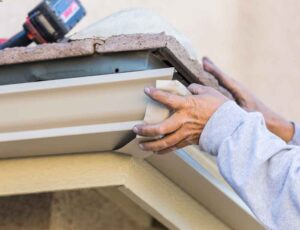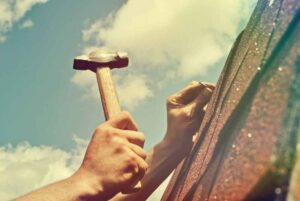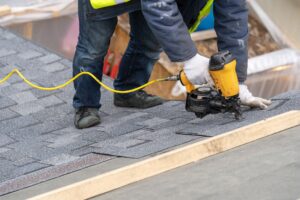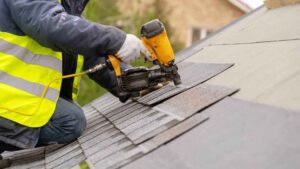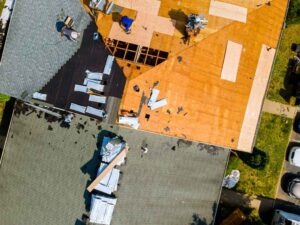Metal is one of the most durable, longest-lasting roofing materials on the market, though most people don’t realize how versatile it can be. From corrugated metal roofing to standing seam metal roofing, each has a unique style and aesthetics to consider. Understanding these can help you choose the most durable, elegant option for your home or commercial building.
The 5 Types of Metal Roofs to Choose From
The most popular metal roofing styles include corrugated, standing seam, stamped, powder-coated and copper. In addition to variations in appearance, some may last longer or respond differently to inclement weather. The best choice will depend on your budget and aesthetics. Here are some of the most popular metal roofing types, plus their benefits and drawbacks.
1. Corrugated Metal
Corrugated metal roofing is easily recognizable for its wavy pattern, often found on agricultural and industrial buildings. Its advantages are as follows:
- Lightweight
- Cost-effective
- Fits many aesthetics
- Excellent water-shedding capabilities
- Resistant to harsh weather conditions
Potential drawbacks include:
- Thermal movement adversely affects thin panels.
- Exposed fasteners can back out after a few years, making water intrusion more likely.
- Color quickly fades unless coated with Kynar or one of its equivalents.
Corrugated metal roofing is a lightweight, cost-effective option that fits many different aesthetics. However, it’s best for large, open, unheated and non-cooled buildings. It uses siliconized polyester paint, which typically fades significantly faster than other types of metal roofing.
2. Standing Seam
Standing seam is the most common type of metal roofing. It has long vertical panels joined with concealed fasteners to create an interlocking seam. Installers roll it out on-site to eliminate horizontal seams. The raised design forms a watertight seal, offering a modern, sleek look ideal for contemporary home designs and historic properties.
Pros of standing seam metal roofing include:
- Superior weather resistance and longevity
- Energy-efficient with the potential to integrate solar panels
- Customizable width, finish and seam height
- Low maintenance requirements
- Recyclability
Potential drawbacks are:
- Less affordable than other common roofing materials
- Rain creates a loud echo
3. Stamped
Stamped roofing is a process of shaping and forming individual pieces of metal to emulate tile, shingle, shake and other types of roofing systems. These systems can completely transform an existing structure, giving you your desired look while experiencing the many benefits of a metal roof.
- Durable and resistant to fading, peeling or cracking
- Less maintenance and a long life span
- Energy-efficient
- Lightweight, reducing structural stress on a building
- Versatile design options to match most architectural styles.
Potential drawbacks include:
- More susceptible to damage from strong winds and hail
- May be noisy when it rains
Stamped roofing offers a cost-effective way to achieve a high-end look for your property, adding architectural interest to residential and commercial properties.
4. Powder-Coated Steel Roofing
Powder-coated steel roofing gives a rugged texture to stamped metal systems. It protects the base steel from hail and wind. In northern regions, powder-coated steel allows snow to melt evenly, eliminating the need for unsightly snow bars. Manufacturers apply this premium finish to metal with heat and electrolysis.
Here are more pros of power-coated steel roofing.
- Dry powder finish enhances durability and aesthetics
- Available in various color options and textures to suit many preferences
- Resistant to scratching, fading and chipping
- Low maintenance requirements and long life span
- Environmentally friendly
Potential drawbacks include:
- Powder coating is less affordable than paint.
- It tends to produce thicker finishes.
- The underlying steel can rust if the granules in the finish become dislodged.
5. Copper
Copper is the quality king of the metal roofing industry, known for its unmatched elegance and natural patina that develops over time. However, it is also less affordable than other styles. Copper roofing also offers exceptional durability, and the material can complement various parts of a home — such as gutters, downspouts and bay windows — for a matching finish. Most copper roofing companies can even age the copper for you to give it that signature green effect.
Here are some advantages of copper roofing:
- Longevity for 100 or more years
- Environmentally friendly, as it is fully recyclable
- Highly resistant to corrosion while requiring less maintenance
- Enhances curb appeal, adding value to properties
Drawbacks of copper roofing can include:
- More expensive than other roofing materials
- Does not buffer noise as well as other roofing materials
- Copper can contract and expand with temperature fluctuations, loosening fasteners
Choose Cornett’s Metal Roofing Systems for a High-Quality Finish
Metal roofing offers exceptional durability and varying design options, providing a long-lasting and elegant solution for your home or commercial property. Still unsure which metal roofing system is the best option for you? At Cornett’s Metal Roofing Systems, our experts can help you choose the best style for your property.
We provide lifetime coverage for new roofs and pride ourselves on exceptional customer service. Our four core principles of quality, integrity, loyalty and family drive everything we do. Call 888-848-7663 to speak to one of our roofing experts, or contact us for a free estimate. We look forward to hearing from you!

